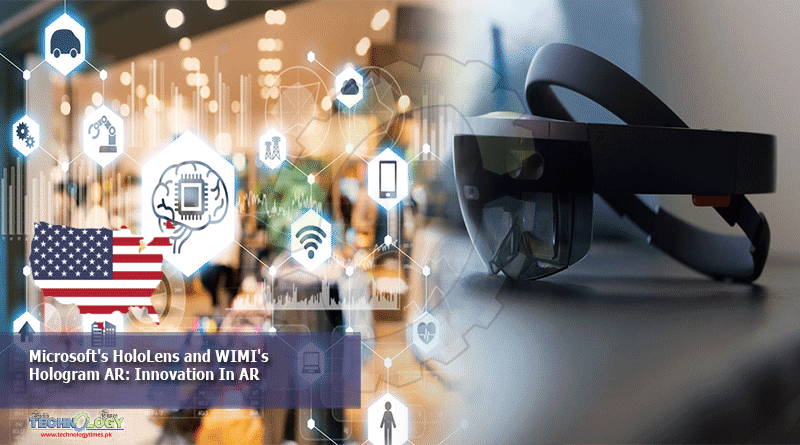MobiusTrend, a market research organization in Hong Kong, recently released a research report on ‘New Innovations in AR Field – Microsoft’s HoloLens and WIMI’s Hologram AR’.

Microsoft has high hopes for its HoloLens mixed reality headsets, calling it the next-generation computing platform. Under Microsoft’s marketing strategy, HoloLens is mainly used in the enterprise commercial market, such as industrial and medical applications.
The HoloLens, which has been launched to its second generation, is more convenient and flexible than when it was first launched, with longer battery life and a broader perspective, so it has application potential and productivity value. In terms of positioning, Microsoft classifies HoloLens as a mixed reality platform. In fact, it is a concept that Microsoft combines virtual reality with augmented reality.
The latest HoloLens application case took place in the energy industry, which is jointly completed by CNPC Ruifei, a subsidiary of CNPC, and Microsoft. It is mainly used for the training of production equipment structure principles, production process training, and production equipment operation and maintenance training. CNPC Ruifei is a company providing digital solutions for the domestic oil and gas industry.
For example, with HoloLens, engineers can see the integrated reality of oil and gas operation scenes and virtual information in the field of vision, and technicians can fully grasp the specific conditions of the production environment based on the real-time and historical data in the field of vision. For training purposes, based on the mixed reality performance of HoloLens, technicians as instructors can also use gesture recognition operation to realize the dismantling of 3D equipment, and annotate on the perspective view, so that the remote staff can see it. This kind of collaboration is more direct than the past remote training based on flat-panel displays and cameras.
The core of WIMI’s business is holographic AR technology, which is used in software engineering, content production, cloud, and big data to provides customers with AR-based holographic services and products. The products mainly include (i) holographic AR advertising services and (ii) holographic AR entertainment products.
In recent years, WIMI has continued to deepen the research on the cutting-edge visual AI technology, and technical research has been accelerating. From open source algorithms to patents and cutting-edge technology research and development, WIMI has always maintained innovation and vitality.
Compared with domestic counterparts, WIMI has established a comprehensive holographic AR content library, and the format of holographic AR content covers from 3D models to holographic short videos. According to the data of Frost & Sullivan, WIMI has established a comprehensive and diversified holographic AR content library among all holographic AR solution providers in China. In terms of revenue, the number of customers, holographic AR content, holographic AR patents, and software copyrights in 2018, WIMI is the leader in the holographic AR industry in China. In 2018, WIMI owned about 4,654 AR holographic contents, 106 software copyrights, and 219 technology patents. WIMI is committed to using holographic technology to meet the entertainment and business needs of customers and end users.
Based on the imaging detection and recognition technology, template matching and detection technology, video processing and recognition technology, holographic 3D layer replacement technology in imaging recognition and dynamic fusion processing technology in imaging tracking, WIMI embedded holographic AR advertisements into online videos. It is hoped that these technologies will be applied to the company’s future strategic blueprints, such as the development and application of holographic 3D face recognition technology and holographic facial change technology.
The holographic cloud service will be deeply integrated with 5G. With the collaboration of 5G’s high speed and low latency, the average transmission delay of remote communication and data transmission from the system terminal to the business server system is about 6ms, which is much lower than the 4G network transmission delay. Meanwhile, it guarantees the remote communication and data transmission of holographic AR without jams, low latency, and multi-terminal remote coordination.
Relying on 5G+AR/VR technology, brands will fully enter the era of intelligent marketing. 5G is about to become popular, and Internet marketing will also change from PC Internet and mobile Internet to the era of intelligent Internet of Things.
With the popularization of mobile smartphones and the advent of 5G, new hardware such as AR glasses continues to emerge, and the basis for mobile user traffic and fixed scene traffic at the application side is also available. The future of using AR+AI+5G as the infrastructure is arriving.
the article is originally published at global news wire.
